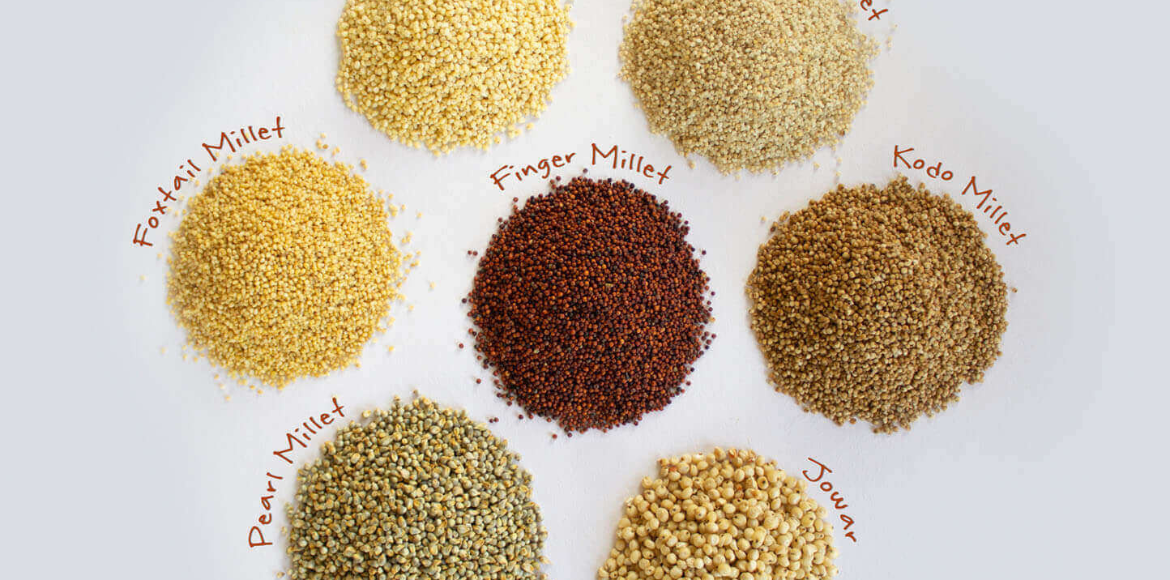Millets Benefits: A Nutritious and Sustainable Food Choice

Millets Benefits: Millets have gained a lot of attention in recent years due to their numerous health benefits and sustainability.
Once considered a poor man’s food, millets are now being rediscovered as a superfood that offers a range of nutritional and environmental benefits. In this article, we will explore the many benefits of millets and why they should be a part of your regular diet.
What are Millets?
Millets are a group of small-seeded grasses that are cultivated in many parts of the world, especially in Africa and Asia. They come in different varieties such as sorghum, pearl millet, foxtail millet, finger millet, and proso millet. Millets are drought-resistant and grow well in poor soil, making them an excellent crop for small farmers in developing countries. They are also gluten-free, making them an excellent choice for people with gluten intolerance.
Nutritional Benefits of Millets
Millets are a rich source of nutrients such as fiber, protein, vitamins, and minerals. They are low in fat and have a low glycemic index, which makes them an excellent food for people with diabetes. Here are some of the nutritional benefits of millets:
#MilletsBenefits: A Nutritious and Sustainable Food Choice https://t.co/guh1Lg1bpt
— genxsoft (@genxsoftinfo) July 27, 2023
High in Fiber
Millets are an excellent source of dietary fiber, which helps to improve digestion and prevent constipation. They also help to reduce the risk of colon cancer and heart disease.
Rich in Protein
Millets are a good source of plant-based protein, which is essential for building and repairing tissues in the body. They are especially beneficial for vegetarians and vegans who may not get enough protein from their diet.
Rich in Vitamins and Minerals
Millets are a rich source of vitamins and minerals such as iron, magnesium, phosphorus, and potassium. These nutrients are essential for maintaining healthy bones, teeth, and muscles.
Low Glycemic Index
Millets have a low glycemic index, which means they are digested slowly and release sugar into the bloodstream gradually. This helps to prevent spikes in blood sugar levels and is beneficial for people with diabetes.
Environmental Benefits of Millets
Millets are also environmentally friendly as they require less water and pesticides compared to other crops such as rice and wheat. They also help to prevent soil erosion and improve soil fertility, making them an excellent crop for sustainable agriculture.
How to Incorporate Millets into Your Diet
Millets can be used in a variety of dishes such as porridge, bread, cakes, and salads. They have a mild, nutty flavor and can be easily substituted for rice or wheat in many recipes. Here are some simple ways to incorporate millets into your diet:
Millet Porridge
Millet porridge is a nutritious and filling breakfast that can be prepared in a few minutes. Simply boil millets in water or milk and add your favorite toppings such as nuts, fruits, or honey.
Millet Bread
Millet flour can be used to make delicious bread that is gluten-free and high in fiber. It can be enjoyed with your favorite spreads such as butter, jam, or hummus.
Millet Salad
Millet can also be used in salads to add a crunchy texture and nutty flavor. Simply cook millet and add your favorite vegetables, herbs, and dressing for a healthy and flavorful meal.
Conclusion
Millets are a nutritious and sustainable food choice that offers a range of health and environmental benefits. They are rich in fiber, protein, vitamins, and minerals, and have a low glycemic index, making them an excellent food for people with diabetes. They are also environmentally friendly and can be easily incorporated into your diet in a variety of ways. So, next time you are at the grocery store